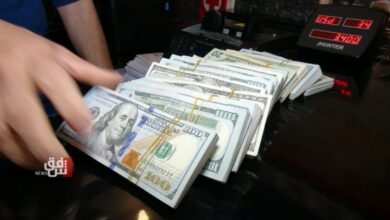Dollar dips as US inflation meets expectations

U.S. prices picked up in January, but the annual increase in inflation was the smallest in nearly three years, keeping a June interest rate cut from the Federal Reserve on the table.
“The worst fears of market participants have been largely alleviated by this print,” said Karl Schamotta, chief market strategist at Corpay in Toronto. “The big issue here was that the CPI print did kind of put the fear of god into a lot of traders – there was a lot of concern that underlying pressures could turn out to be hotter than anticipated.”
The dollar index had hit a three-month high after consumer price inflation data (CPI) released on February 13 showed prices accelerated more than expected in January.
Traders are closely watching economic data for clues on when the Fed is likely to begin cutting rates.
Many economists anticipate the U.S. economy will slow in the coming months while inflation is likely to continue to ease closer to the U.S. central bank’s 2% annual target. That would prompt the Fed to begin easing and send the dollar lower.
Weakness in the greenback on Thursday is also likely due in part to month-end rebalancing, as some investors prepare for the prospect of a weaker dollar, said Schamotta.
“The signs are auguring towards a cooling in a lot of U.S. economic data and that could damage that U.S. exceptionalism trade and lead to flows out of the dollar,” he said.
Traders are pricing in a 66% probability the Fed will begin cutting rates in June, up from 63% on Wednesday, according to the CME Group’s FedWatch Tool.
The dollar index was last down 0.19% on the day at 103.74. The euro gained 0.11% to $1.0848.
European data earlier on Thursday showed that price pressures in the region slowed, though there were some pockets of underlying strength.
Cheaper energy prices pushed German inflation down to 2.7% in February. Inflation also slowed in France although it was slightly higher than expected, and slowed more sharply in Spain.
National inflation data for February is being published by individual euro zone countries before the EU-wide release, slated for Friday, which is expected to show headline inflation slowing to 2.5% year-on-year in February from 2.8% in January.
The yen bounced after Bank of Japan board member Hajime Takata said he felt there were finally prospects for achieving the bank’s 2% inflation target, paving the way to leave behind negative rates and yield caps.
“Takata’s remarks should add to conviction that an earlier than expected hike at the March meeting should not be ruled out,” said Christopher Wong, currency strategist at OCBC.
The yen on Wednesday had neared the 150.88 level reached on Feb. 13, which was the weakest since Nov. 16. The greenback was last down 0.77% against the Japanese currency at 149.51 yen.
The yen has remained a popular funding currency in carry trades, in which traders sell or borrow the Japanese currency and invest in higher yielding currencies.
In cryptocurrencies bitcoin was last up 3.9% on the day at $62,968, holding just below a more than two-year high of $63,933 reached on Wednesday.
(Reporting by Karen Brettell)
Disclaimer: This report is auto generated from the Reuters news service. ThePrint holds no responsibilty for its content.
Source link




